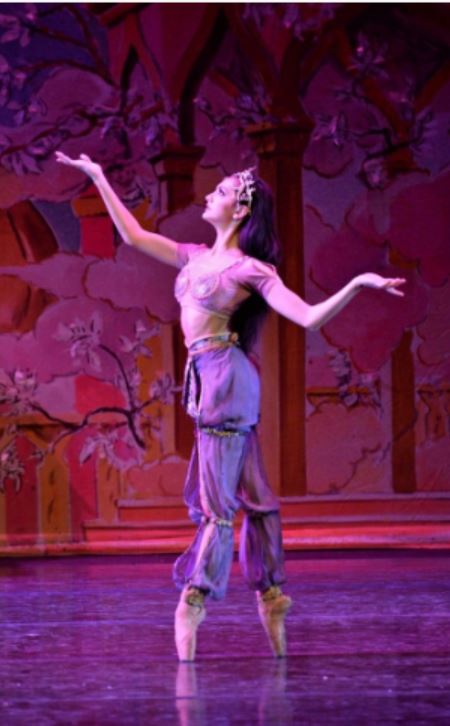Dreams of dancing
Stephanie Parrot performs her dream role as The Arabian in last season’s The Nutcracker. Photo courtesy of Stephanie Parrot.
February 14, 2017
Standing outside the dance room window, a two-year-old Stephanie Parrott watched her older sister, Victoria, practice. Parrott knew from that moment she wanted to perform ballet.
Parrott has danced for 14 years, two of which were spent performing at the Twin Cities School of Dance and seven with her current dance home, The Springfield Dance Company.
Parrott practices and rehearses twelve or more hours a week.
“Whenever I make a mistake in class, I have to do it over and over again until I get it right,” Parrott said.
Parrott says her drive is perfection,
“Ballet is visual. If isn’t perfect it is wrong, and being wrong is not pretty,” Parrot said.
A typical rehearsal begins with an hour-and-a-half ballet class. Then for the next four or more hours, there is dancing, or waiting around, it all depends on what role she is assigned.
Parrott plans on attending the University of Arkansas and on participating in dance classes.
This past December, Parrott danced in “The Nutcracker” and performed the dance part of her dreams: the Arabian. “I went to the Nutcracker before I was able to be in it, and when I watched it I knew that was the part I wanted to be,” Parrott said.
Parrott was determined to get the role of the Arabian. She explained, “I would cry at night because I was not able to get my splits down, and you would have to have the splits.”
Parrott remains injury free by warming up and carefully stretching.
“Whenever you are not dancing during rehearsal, you have to stretch, or else your muscles will cool down which increases the risk of injury,” Parrott said.
Parrot also believes that proper training and technique are key in whether or not a dancer will become injured.
“No ballet move done correctly is easy,” Parrott said.
“The most challenging aspects of ballet are not the moves that make up a combination or dance, but the tempo, and expression of the piece,” Parrott said.
After performing for so many years, Parrott says she is much more comfortable and much less stressed.
“It is a happy feeling. I am never stressed because we practice so much that by the time you get on stage you finally get to express yourself, and your emotions come out,” Parrott said. “You have to do these insanely difficult moves while making the audience think that it’s the easiest thing on earth and smile the whole time while doing it,” Parrott said.
